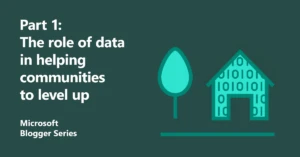
Supercharge security for multiple devices on Azure
Citizens’ health needs are infinite, but providers’ resources aren’t. Cloud platforms are enabling digital transformation, and for the health sector that means improved access to data, digitally engaging both practitioners and patients, whilst optimising clinical and operational effectiveness.
One of the best examples of this type of transformation is how many different devices and systems can be stitched together remotely via the cloud, granting any trusted employee, patient, health provider, or nurse access to relevant information to help them complete their tasks.
Despite these benefits, there are security risks involved when multiple access points are integrated into daily operations. Knowing the steps involved to mitigate these safety concerns, however, will keep an organisation and its data protected from external breaches, meaning staff and patients can interact with the cloud knowing that their private information remains private.
Connecting healthcare devices
We’ve mentioned how cloud platforms can support patient care and administrative efficiency by connecting many services and products together, but what does this look like?
Specifically, this could include medical equipment, thin-client devices and physicians’ medical pads, which access data from different sources, streamlining workflows and saving resources and time that can be better used saving lives.
Access to data may be granted to trusted parties: doctors can log into systems via workstations or mobile pads to study health records, test results and prescriptions easily and quickly. Patients on the other hand may want to register online, check into outpatient rooms, or pick up prescriptions on any device that’s convenient for them.
On a far larger scale, databases from multiple hospitals and healthcare institutes can be integrated into a public, private or hybrid cloud platform to share patient records, personal information and prescriptions, which can also be used for national surveys, epidemiological studies or big data initiatives.
Having all of these cloud access options available on demand does provide a far richer experience for patients and practitioners than traditional methods of working, but variability of device access can make it difficult to manage, track, and audit many actions. It may also introduce security threats as unregulated accesses are harder to spot across a larger cloud interface.
Azure reduces these risks within its cloud platform using certain key principles to provide healthcare organisations with all the benefits of multiple device access as well as strong security measures for peace of mind.
Security threats and Azure solutions
As discussed above, multiple device access to the cloud increases the potential for certain security attacks. Here, we’ll go into more detail:
Remote management threats target such things like account credentials and can run harmful codes, exploiting weaknesses in an organisation’s security strategy. If a nurse uses a workstation that is also used for administrative tasks, for example, it can be compromised via those two entry points; the nurse could be using open-source tools, browsing the web, or opening a harmful document that contains a trojan, or other malware that targets sensitive patient records and data.
Attacks can be reduced by minimizing a health organisation’s attack surface – its number of entry points. Azure has 13 key principles to secure development and operations in a healthcare context.
These principles are designed primarily to make any cloud-based solutions more resilient to attack by reducing the time taken to prevent, detect, contain, and respond to any threats. In this way, healthcare organisations can successfully manage any potential security risks early on in its cloud computing adoption.
Further information on these principles can be found in A Practical Guide to Designing Secure Health Solutions Using Microsoft Azure.
Azure also meets a broad set of international and industry-specific compliance standards, including HIPAA , FedRAMP, and the EU Data Protective Directive, so that any information complies with any domestic health and data laws.
The ever-private cloud
The cloud is a far more powerful and far less expensive way to innovate than traditional health solutions. In order to ensure the highest quality of care in an increasingly digitised environment, however, health organisations need to know that sensitive information will stay secure and comply with regulations when they adopt cloud platforms.
Azure is committed to ensuring that data remains private and under control. We want to help healthcare providers digitally transform, engaging both carers and patients, optimising clinical and operational processes, and ensuring vital information is safe, secure and readily accessible.
Find out more about how the Microsoft cloud can help you transform healthcare




